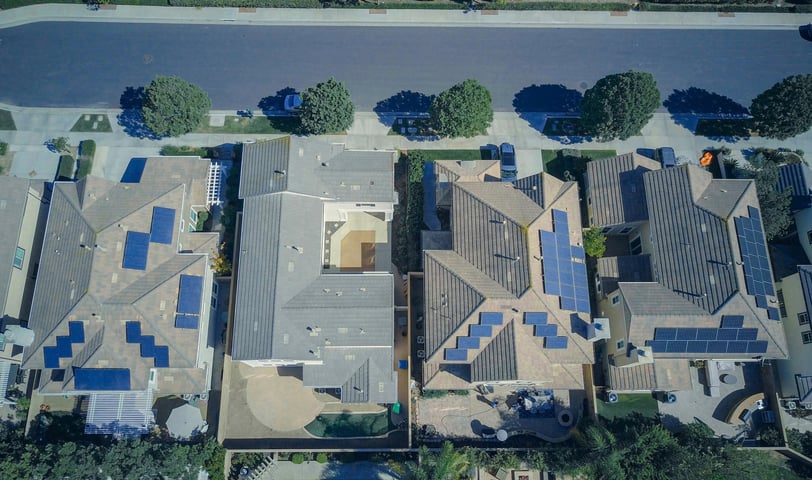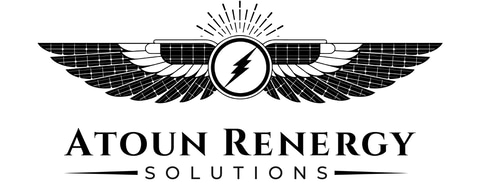The Time to Go Solar is Now
Going solar used to be more about the environment, but now it makes financial sense too. Let’s explore some of the reasons why this is becoming more and more popular.
Assem Sherief
6/21/20254 min read


Different system types for all needs
There is a variety of solar system setups to fit all needs. Below are the most common.
Grid-Tied
You might have heard the term Grid-tied Solar Systems. This simply means that your house is still connected to the utility grid even though you have solar panels. The reason behind this is that most utility companies, such as NB Power, offer what’s called a Net Metering system. We’ll talk about that a bit later, but you can think of it as the utility grid working as an unlimited backup battery for your house. So, at night or in the winter times, you can still use power from the grid when you need it.
Hybrid
Hybrid systems are essentially just grid-tied systems, but you can also have a backup battery to keep your house running on electricity during power outages, for example, and it can help with your house energy optimization as well.
Off-Grid
Off-grid systems are not connected to the utility grid. Rather, they operate on solar panels and batteries only. Those systems are more popular in places where the utility grid is not available or for simple energy needs, such as summer cottages and similar applications.
Net Metering
Net Metering programs are offered by utility companies such as NB Power to property owners who install renewable energy systems. And it uses a utility meter that works in both directions. So, for example, in the summer, when you are overproducing electricity than you need, the excess gets fed into the utility grid to help power other homes using your renewable energy source, and in exchange, the utility company gives you credits equivalent to the energy you feed into the grid.
For example, on a sunny day in June, you produce 100 kWh of energy through your solar system, and your house only uses 20 kWh of that, so you get credits for the extra 80 kWh you produced. Then, later in the winter when your house is using more than you produce per day, you consume those credits instead of paying money.
In essence, if your system is sized properly, you will only be paying the fees for being connected to the grid and, of course, taxes on the kWh you use, but not the actual kWh price.
For more info: Click Here!
Incentives and Loans
There are government incentives and loans to help homeowners adopt and install renewable energy sources while avoiding the upfront cost.
Total Home Energy Saving Program
This program offers you $200 per kW of saved energy through energy efficiency retrofits, including renewable energy installations such as solar panels, and it maxes out at $3000. So, for example, if you install a 10 kW solar system, then you can get ($200 x 10) = $2000, and for a 15kW system, you can get $3000 as rebates, which brings down the price of your solar system.
For more Info: Click Here!
Greener Homes Loan - Interest free
The federal government offers a 10-year interest-free loan to help with your energy efficiency retrofits, including solar systems. The loan can be up to $40,000 to cover 100% of the cost of most residential solar installations. This helps you replace your energy bill with the loan payment and be safe from any future energy price increases from the utility company when paired with the Net Metering system. What’s even better is that after the loan is paid, you basically have free electricity.
For more info: Click Here!
How to access these benefits?
The process is quite simple and straightforward:
Join the Total Home Energy Saving program and schedule an energy audit inspection.
Proceed with the inspection and obtain an energy efficiency report (recommendations for improving your house’s overall energy efficiency, including installing renewable energy systems).
Get quotes for all your energy renovations and solar system.
Apply for the Greener Homes interest-free loan; it can take 2 to 3 weeks to get approved.
Once approved, you can get up to 15% advance payment of your loan amount to pay down payments for your renovations.
At this point, you can proceed with the solar system installation.
The last step is to get the final energy audit inspection; then, the remaining loan balance should be released to you.
Solar makes financial sense.
As mentioned earlier, solar is not just for the environment; it’s financially better for you as well. Let’s do a quick example calculation to prove that claim.
For example, if you’re quoted $30,000 for a solar system to offset 100% of your consumption, and you get a $3,000 rebate on it, your system cost immediately comes down to $27,000. Next, you get the 10-year interest-free loan to pay for it, which makes the system cost come to about $225 a month.
Don’t forget you still need to pay your connection fee of about $30 and taxes on your consumption. Let’s assume it’ll be around $40; that makes your total monthly payment around $295, which would probably be lower than your current monthly utility bill. And as discussed, you would be protected from any energy price increases as well as you get free electricity after your loan is paid.
Ready to go solar or have any questions?
We would love to help you make the transition or answer any questions you have. Please don’t hesitate to reach out, and we’d be more than happy to help.
Atoun Renergy Solutions
Professional Solar Energy systems design and installation.
Contact
Address
© 2025. All rights reserved.
795 Main St. Suite #300 Moncton, NB
